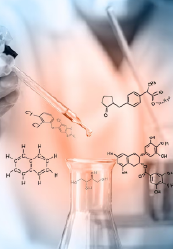Nitrile Butadiene Rubber Market: An Effective Application for Oil Aversion
Nitrile butadiene rubber is normally used synthetic rubber elastomer with applications covering several varied industries. Originating in Germany in the 1930s, it is recognized for its robust hostility to fuel, oil, acids, and other chemicals, rendering it perfect for a gamut of automotive and aerospace implementation. NBR is a copolymer crafted from two polymers, namely acrylonitrile and butadiene. In the nitrile butadiene rubber market, particular features of NBR can differ dependent on its chemical configuration. Escalated quantities of acrylonitrile will create superior oil aversion but also decrease its flexibility. NBR has several applications covering many industries because of its aversion to oil and chemicals, its extensive temperature functioning range, and wearing and tear aversion.
Properties of Nitrile Butadiene Rubber
NBR has several beneficial properties that render it a good option for several varied uses covering several different industries. As with any substance, there are also some drawbacks that might render it less than perfect for all the pros and cons of NBR prior to selecting for the particular project.
- Temperature: Varied kinds of rubber counter diversely to varied temperatures. Some act well in escalated temperatures, while others act well in lower temperatures. Some even enact well in a broad gamut of temperatures. One has to contemplate the application and what temperature the product will need to endure.
- Environmental stress: In addition to extreme temperatures, several other environmental irritants can influence rubber's performance. These include susceptibility to ozone, light, UV rays, pollutant gases, acids, fuels, and other chemicals.
The Market Insight
As per the recent analysis by Polaris Market Research, the global nitrile butadiene rubber market size was valued at USD 2,274.12 million in 2023 and is predicted to reach USD 3,735.74 million by 2032. Also, the study states that the market reveals a robust 5.7% Compound Annual Growth Rate (CAGR) over the predicted timeframe, 2024-2032.
Advantages of Nitrile Butadiene Rubber
NBR has an uncommonly robust hostility to gasoline, oil, aliphatic hydrocarbons, acids, and other chemicals. It also has a broad temperature functioning range of -40 degrees Celsius to 108 degrees Celsius. In the nitrile butadiene rubber market, the amalgamation of these two robust features renders nitrile the ideal option for usage in the automotive and aerospace industries. NBR also has robust water hostility as well as good erosion and tear hostility.
Delving into the Dynamics of the Nitrile Butadiene Rubber Market Size and Share to Uncover Key Insights, Request for a Sample Research Report
Applications of Nitrile Butadiene Rubber
- Automotive: Because of its robust hostility to fuels and oils, NBR is normally utilized in seals, oil hoses, grommets, and more.
- Aerospace: Just as with the automotive industries, NBR's fuel, oil, and chemical hostility makes it perfect for seals, oil hoses, grommets, and fuel tanks.
Growth Drivers
The increasing usage of NBR in several automotive applications such as cables, belts, and O-rings because of its heat wearing hostility, oil and gas hostility, and water and gas penetrability. Also, NBR is excessively engaged in the production of quavering segregation mounts that are predominantly utilized in vehicles to curtail the conveyance of vibrations from several automotive constituents. Thus, with the speedy escalation in automobile manufacturing, the demand for NBR is also predicted to escalate sizeably.
End Note
Thanks to its exceptional oil hostility, NBR is often utilized on oil platforms, in the petrochemical industry, and in garages and factories. In the nitrile butadiene rubber market, the rubber is also used for gaskets and is the kind of rubber most often used in O-rings.


